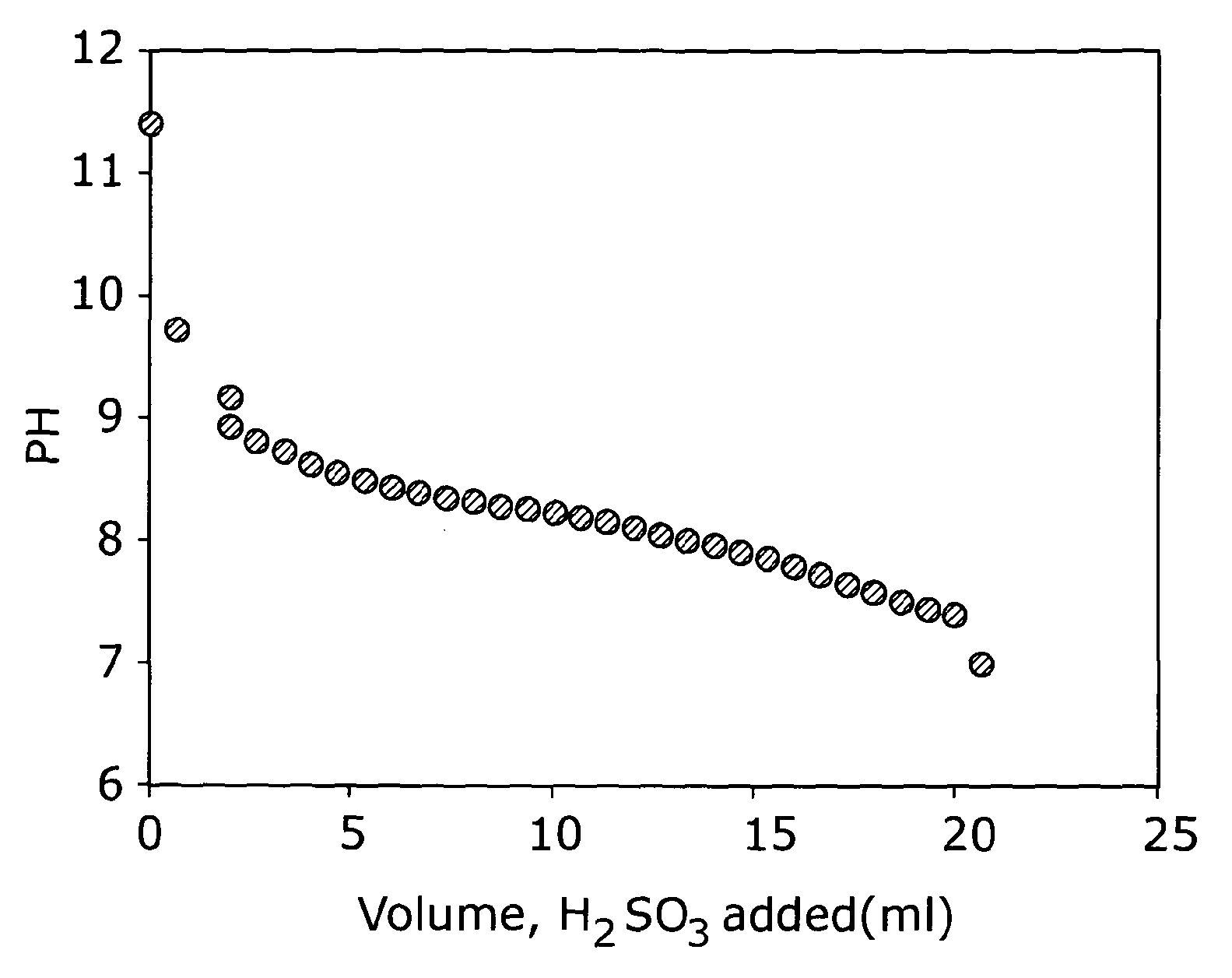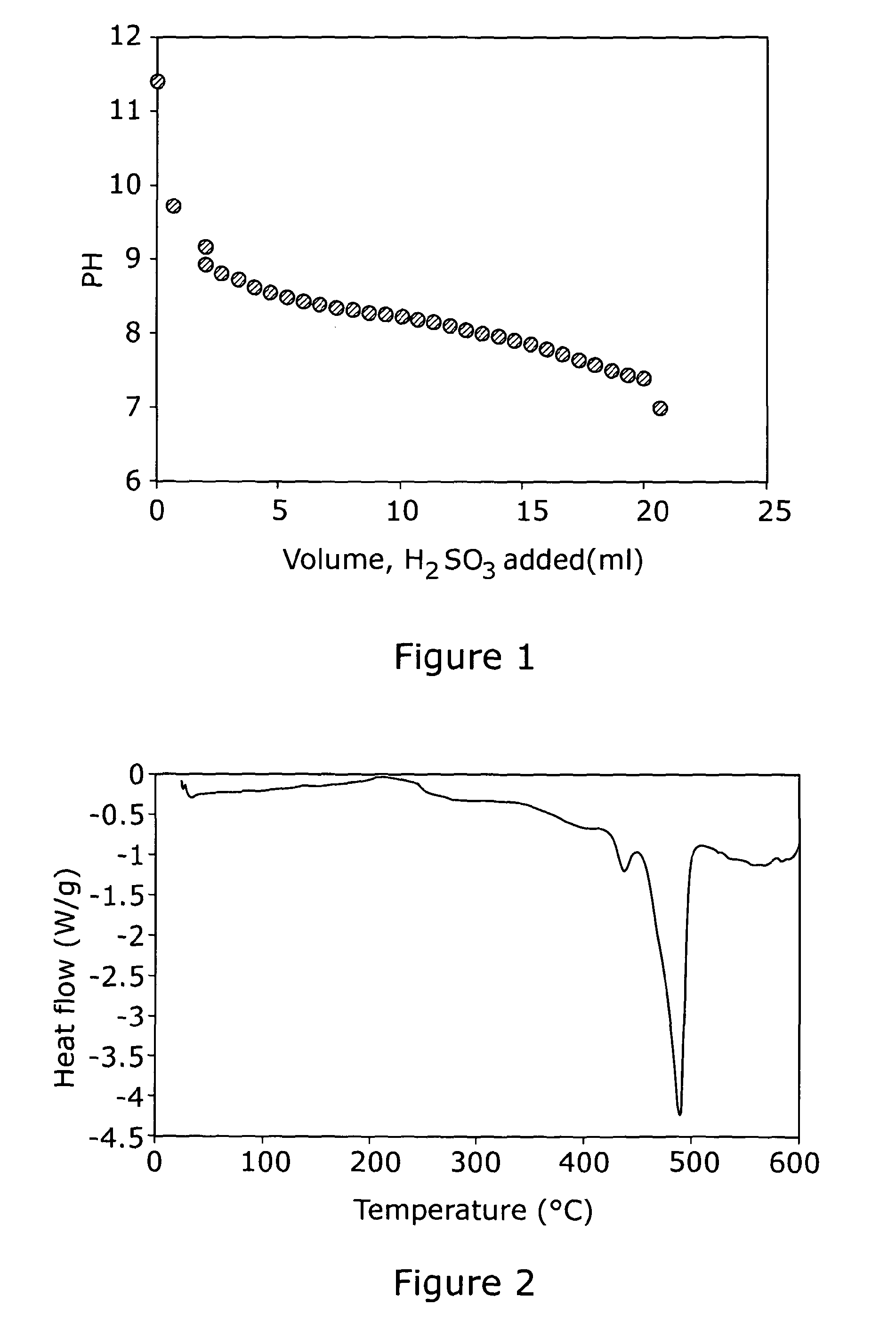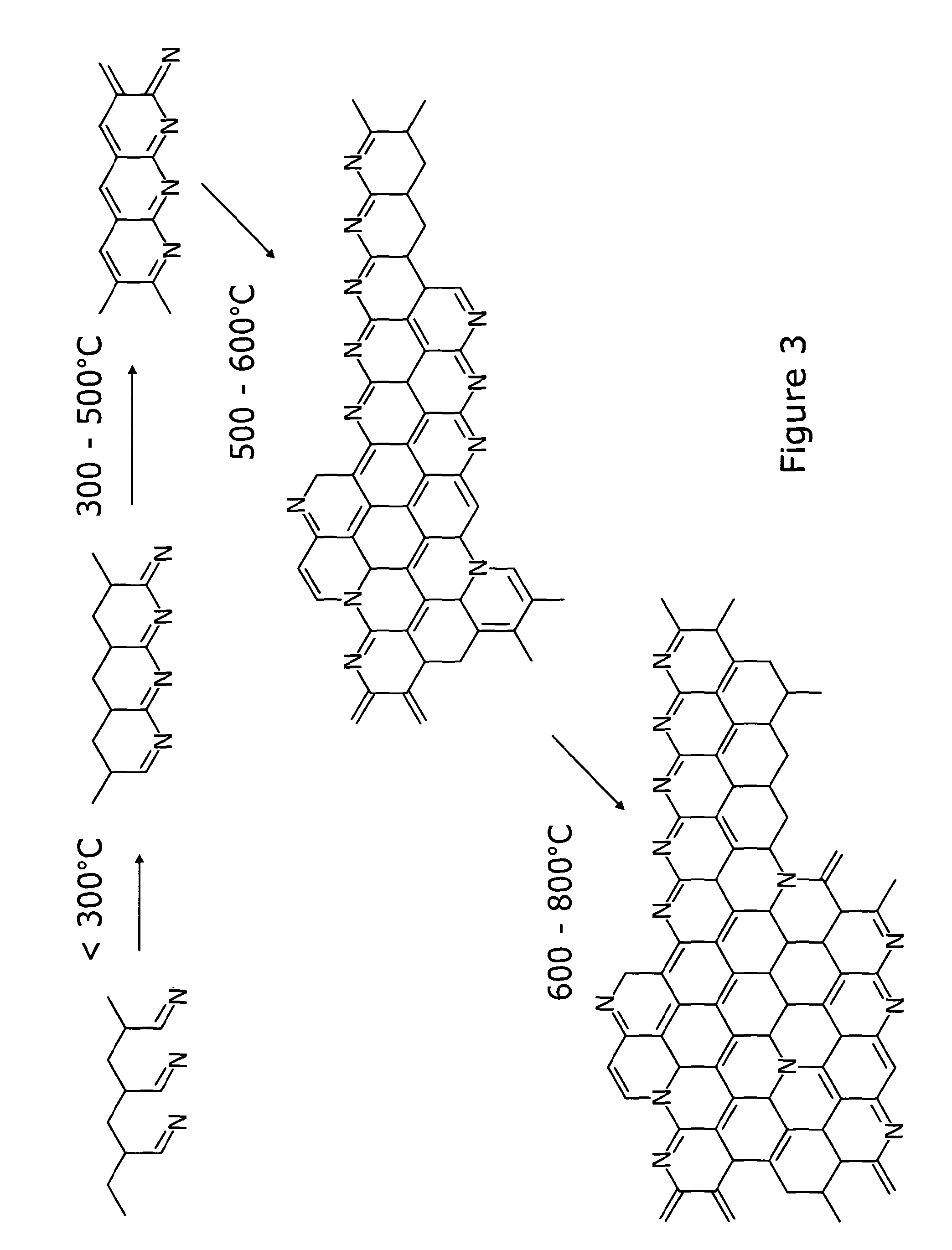Preparation of electrode compositions
- Summary
- Abstract
- Description
- Claims
- Application Information
AI Technical Summary
Benefits of technology
Problems solved by technology
Method used
Image
Examples
example 1
Preparation of Li2SO3 Via the Sulphurous Acid Route
[0044]This Example illustrates how lithium sulphite may be synthesised in accordance with the first aspect of the invention.
[0045]A white suspension is prepared in a three-necked round bottom flask by the addition of 0.74 g of lithium carbonate (Li2CO3) to 10 ml of water under a constant flow of argon. A 5% w / w solution of sulphurous acid (H2SO3) is purged with argon for 10-15 minutes and then added drop wise to the cloudy suspension until a clear solution was formed and effervescence ceases. The pH of the solution is monitored, and purging continued throughout the course of the reaction. The clear solution is evaporated to dryness to form a hard white solid using a rotary vacuum evaporator at about 120° C. for 4 hours. Following this, the solid is crushed into small lumps, ground to a fine powder and then transferred to a Buchi furnace for additional drying at 180° C. under vacuum for a further 2-3 hours. The sample is characterise...
example 2
Preparation of Li2SO3 Via the Sulphurous Acid Route with In-Situ Impregnation of TR-PAN to Form an Electrode Material
[0049]This Example, in accordance with the second aspect of the invention, illustrates how the lithium sulphite synthesis of the first aspect may be modified so that an electrode composition is formed during the synthesis.
[0050]First, thermally restructured (TR) PAN was generated as the main active electrode material according to the teaching of the above-mentioned 2002 paper. While surface area increases with pyrolysis temperature, N-content reduces and hence, commercially available PAN was thermally restructured by heating in a furnace at up to 750° C. in the presence of powdered Na2CO3; Na2CO3 was added to the PAN in a ratio of about 3:1 to promote pore formation leading to an open and porous structure. After cooling, the residual Na2CO3 was washed out with water and the TR-PAN was dried. The TR-PAN had specific surface areas of >900 m2g−1 and nitrogen contents of ...
example 3
In-Situ Chemical Synthesis of TR-PAN / SO3 Complex for TR-PAN-Based Symmetric Capacitors
[0052]This Example, in accordance with the third aspect of the invention, illustrates the use of a sink to absorb lithium ions during a complexing step conducted in solution to form SO3 complexed TR-PAN electrode material suitable for a supercapacitor.
[0053]Thermally restructured (TR) PAN was generated as detailed in Example 2.
[0054]Synthesis of lithium sulphite is carried out similarly to Example 2 above in that TR-PAN is again added prior to the evaporation step. However, rather than merely forming the precursor lithium sulphite / TR-PAN electrode material, the synthesis is carried out in the presence of a lithium sink such that a complexing step can simultaneously take place to form the complexed TR-PAN in situ.
[0055]A white suspension is prepared in a three-necked round bottom flask by the addition of 0.74 g of lithium carbonate (Li2CO3) to 10 ml of water under a constant flow of argon. A 5% w / w ...
PUM
 Login to View More
Login to View More Abstract
Description
Claims
Application Information
 Login to View More
Login to View More - R&D
- Intellectual Property
- Life Sciences
- Materials
- Tech Scout
- Unparalleled Data Quality
- Higher Quality Content
- 60% Fewer Hallucinations
Browse by: Latest US Patents, China's latest patents, Technical Efficacy Thesaurus, Application Domain, Technology Topic, Popular Technical Reports.
© 2025 PatSnap. All rights reserved.Legal|Privacy policy|Modern Slavery Act Transparency Statement|Sitemap|About US| Contact US: help@patsnap.com



